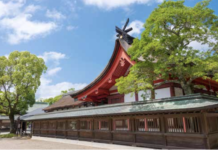Text and Photos by Steve De Neef
Inside a small family hut, everyone is chatting about the latest community gossip as their hands intuitively work away. Seaweed is being cut off a line by an elderly lady, and then tossed to her granddaughter, the younger girl re-cutting it to palm-size pieces and handing it to her brother, who ties it to another line. Everyone is sitting on a seaweed-covered canvas and everyone has a job to do.
This is everyday business in Imba, a small barangay in the Caluya Islands, in a province of the Western Visayas. Seaweed, or tambalang, as it is called locally, is the main livelihood in this part of the Philippines. It truly is a family business, one that the locals are rather proud of. Just like Bessie Gavillo and her family, most community members rely on this cash crop for survival. From planting the seaweed in the shallow waters of their island to drying and selling it to processing plants, everything is done by family members and friends.
Bessie, her husband Victor and their kids all help out with the seaweed farming business. They all say one of the reasons they love their job so much is because they can spend time together; as it’s run like a proper family business, they can also dictate their own hours and they have no boss. Whatever income they make from seaweed is theirs.
Victor and Bessie once lived in the capital, Manila, but they quickly realised city life wasn’t for them. He worked long hours in construction for little pay, not offering them the opportunity to save and hope for a brighter future for their children. Once moving back to the small island, they discovered seaweed farming and realised they could make an above-average income, live off the land and spend quality time with their family. As Victor puts it, “What more can you ask for?”
Located in Antique province, the Caluya Islands consist of eight islands: Semirara, Caluya, Sibay, Liwagao, Nagubat, Sibato, Sibolo and Panagatan. Seaweed farming doesn’t happen on all of these islands, but about one third of the population (about 30,000) relies on it for their livelihood. On islands like Sibato, Sibolo and the Panagatan Keys,

The practice began when a local fisherman, who observed it being grown in Palawan, thought it would work perfectly on his home island. He quickly learned the technique from friends, bought a sack of seaweed seedlings and materials, and brought seaweed farming to Caluya in 1986. Less then a decade later, it had already established itself as the main livelihood for local families. While seaweed farming might not take off in every location, the Caluya Islands seem to be shaped both socially and environmentally as the perfect seaweed farming area.
Cultivating seaweed has to take place in ocean waters that are relatively sheltered, ideally with a sandy or seagrass bottom. The water should not be deeper than about five metres, and there should be just enough wave action and current to mix up nutrients in the planted waters. Pollution, water that’s too warm and a lack of light can all affect seaweed negatively, so locals like Bessie and her family care a great deal about keeping their environment healthy. Most of the Caluya Islands are surrounded by a barrier reef and have a 100 to 200-metre area of shallow seagrass that is perfect for growing tambalang. The reef blocks most of the bigger waves, yet allows the right amount of water movement so seaweed can flourish.
Seaweed is a robust cash crop. On Caluya, it can even be used as currency to shop in the local supermarket. People here often refer to their seaweed lines as a floating bank account. As long as they have seaweed, they have an income. One line can be turned into 10 lines in just six months, giving the farmers a choice of expanding their “floating bank account” quickly, selling for cash or trading for goods. This kind of flexibility is a big help for families; many of them are planning to save so that they can send their kids to college. Indeed, they often grow and multiply their seaweed lines and sell them right before school fees are due.
In Caluya, Bessie and her family use the so-called bottom monoline method. Nylon lines of about 15 to 20 metres long are staked at each end to the sandy bottom with bamboo sticks, and enough slack is left so that the line floats at the surface during high tide. Victor usually takes care of this part of the job. Before the lines get put in the water, small cuttings of seaweed (seedlings) are tied at 15-centimetre intervals using “strawless”, a kind of plastic twine. This is the job of Bessie and the kids, although sometimes everyone helps out.
For the rest of this article (Asian Geographic No.104 Issue 3 /2014 ) and other stories, check out our past issues here or download a digital copy here













